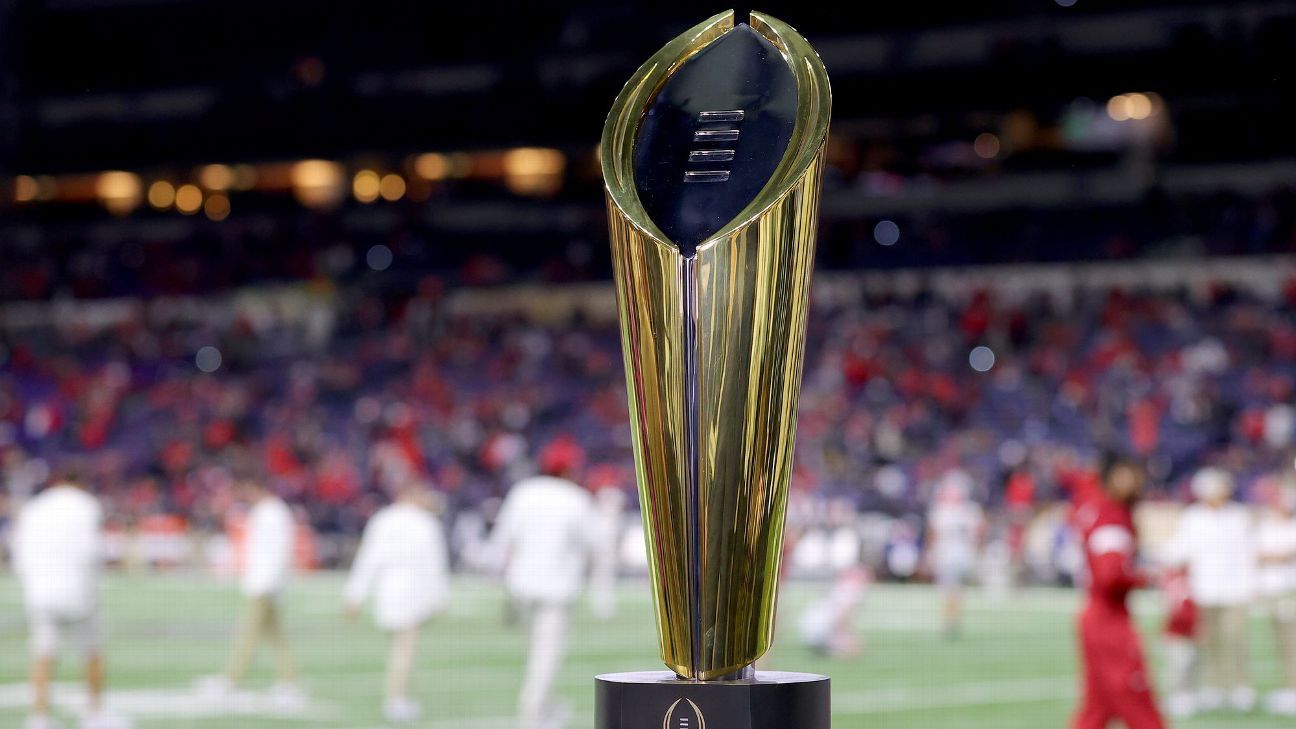ROSEMONT, Ill. — American Athletic Conference commissioner Mike Aresco clarified his comments about a College Football Playoff model that rewards the five highest-ranked conference champions, saying Wednesday that he meant for that to begin with the new contract, which wouldn’t start until 2026.
On Tuesday, Aresco told reporters that 5+7 model — the five highest-ranked conference champions plus the next seven highest-ranked teams — is something “we have to have” in the new 12-team CFP format if the Pac-12 dissolves.
On Wednesday morning, Aresco told ESPN that, for now, he will continue to push to keep the currently agreed upon 6+6 model, which rewards the six highest-ranked conference champions, plus the next six highest-ranked teams.
For the format to change in time for the 2024 season, it would have to be unanimous, and Aresco said Wednesday that he’ll vote against changing the current contract. The current CFP contract runs through the 2025 season.
“I must not have been clear about that, apologize,” Aresco said in a text message. “I was talking about the future after 2025 when unanimity is no longer required to change the format and 5-7 is a likely outcome that we would prefer over all at-larges or fewer automatics. [I] will vote 6-6 for now.
“If a nuanced proposal that is different should develop, I would consult with my conference membership.”
If the Pac-12 dissolves, or loses its status as a Power 5 conference, keeping a 6+6 model for the next two years would allow guaranteed access for two Group of 5 champions. The current model was agreed upon before the sweeping realignment changes this summer decimated the Pac-12, leaving the conference with Oregon State and Washington State tied up in a legal battle as they determine the best path forward.
If the Pac-12 folds, multiple sources have indicated to ESPN there is a strong preference to change the model to 5+7, meaning the five highest-ranked conference champions, plus the next seven highest-ranked teams.
Aresco, who spoke to a small group of reporters Tuesday following the first day of CFP meetings at Big Ten headquarters, said the CFP’s management committee didn’t talk about the future format, but are likely to on Wednesday.
“I’m fine myself with the 5+7,” Aresco said Tuesday evening, “assuming we stay at 12 teams. The 5+7 is something we really have to have, because otherwise, what’s the point of all the work we did for 6+6? If there’s no Pac-12, you’ve got four [power conferences], but you still want that fifth [spot] so that our group, 65 schools, has a shot at the playoff.”
Aresco’s public support for the 5+7 model had his fellow commissioners whispering on Wednesday morning about him losing his leverage in the room, sources told ESPN. His voice is a critical component to the closed-door discussions because of the unanimity required. Even with what appears to be overwhelming support for 5+7 within the room for the next contract, though, there is hesitancy to commit to it with so much uncertainty looming in the Pac-12.
According to NCAA bylaws, an FBS conference needs at least eight full FBS members that satisfy all bowl subdivision requirements. The NCAA gives conferences a two-year grace period, though, when they no longer meet membership requirements before changes are needed.
Multiple sources indicated they don’t even know if Pac-12 commissioner George Kliavkoff, who attended the meetings but didn’t speak to reporters, has a vote. There’s still a possibility the Mountain West schools merge with the Pac-12 to try to benefit from its brand and possible assets, but that opens the difficult question of whether the Pac-12 would still be considered a Power 5 conference, which gets the benefit of 80% of the CFP revenue. The Group of 5 schools receive 20%.
According to the NCAA, a conference’s status as an autonomy conference is determined by the Division I board of directors.
“It’s going to have to be subject to a serious discussion,” Aresco said. “Without question. Absolutely. You’ve heard the notion of playing as a two-team conference, and what are your voting rights? There’s a material change here. There are things that weren’t contemplated in the agreement. All of those things have to be discussed.”
